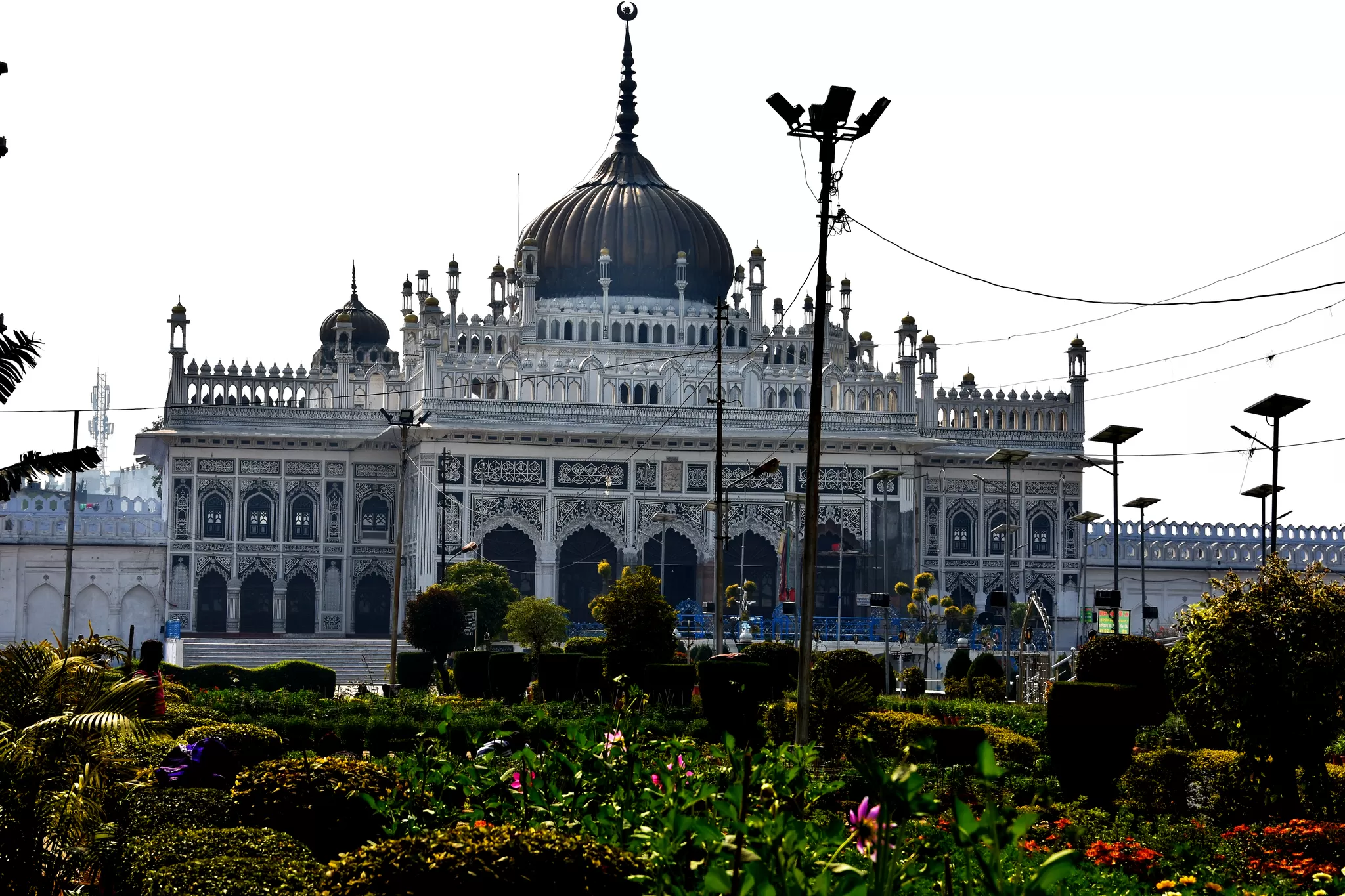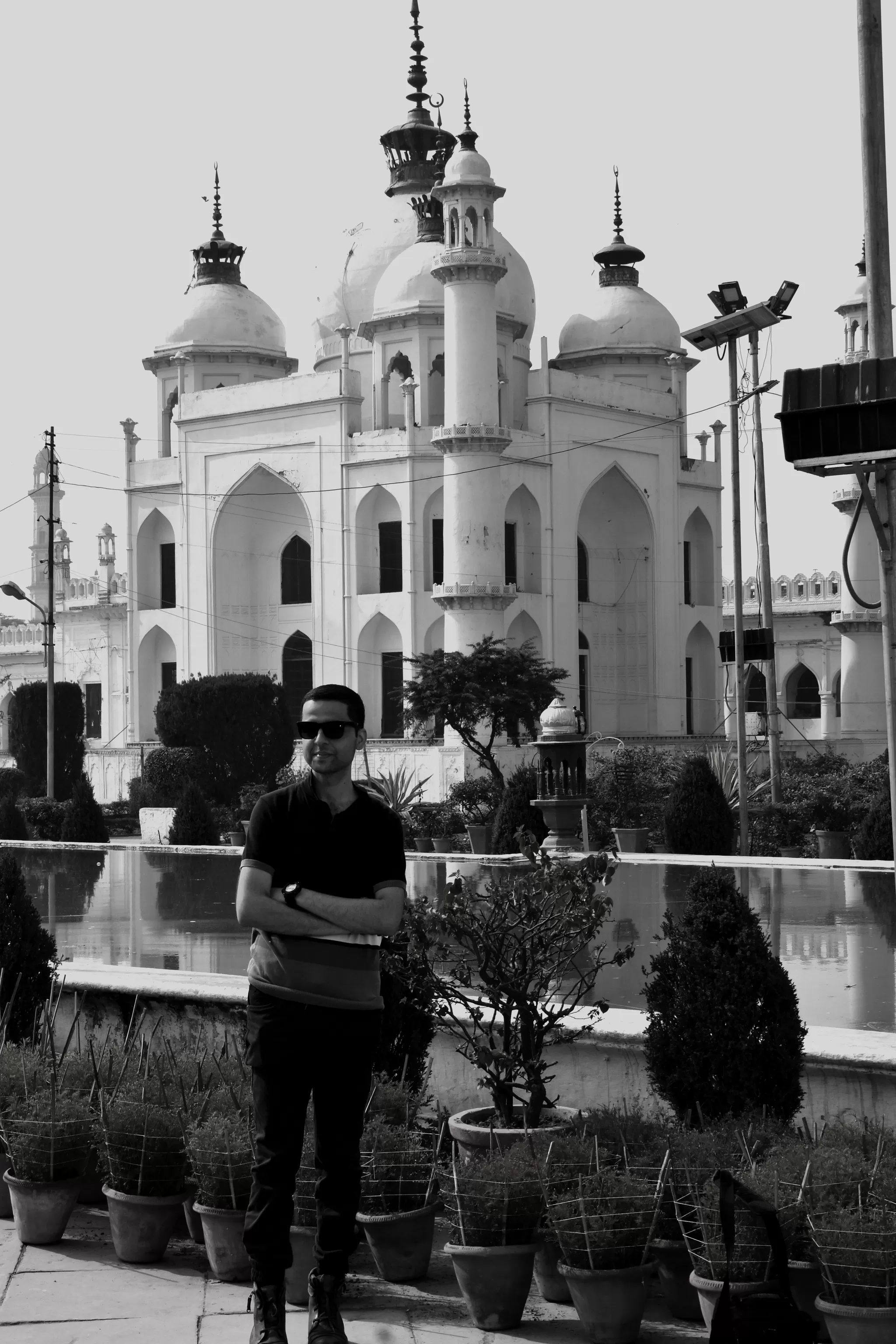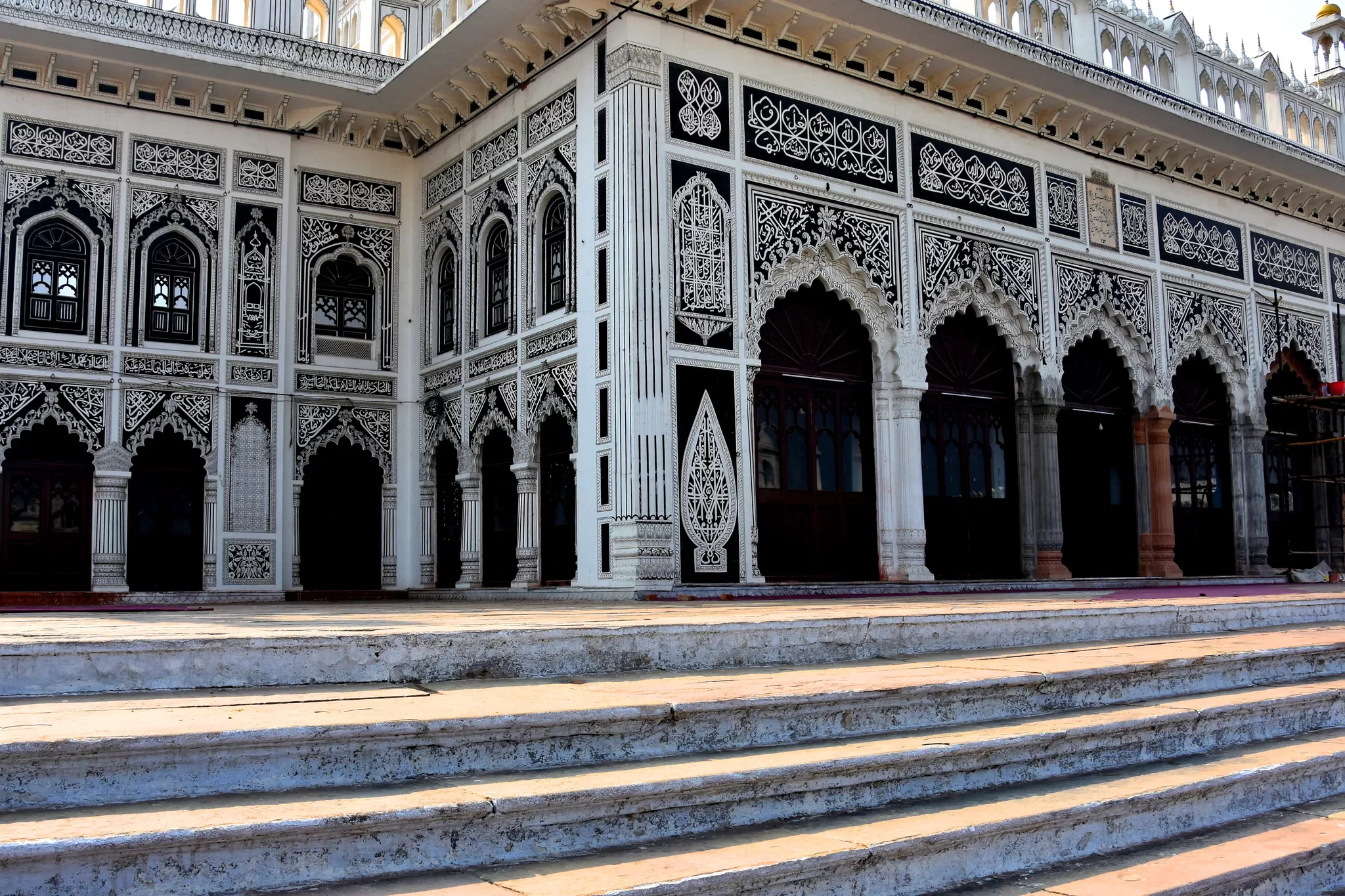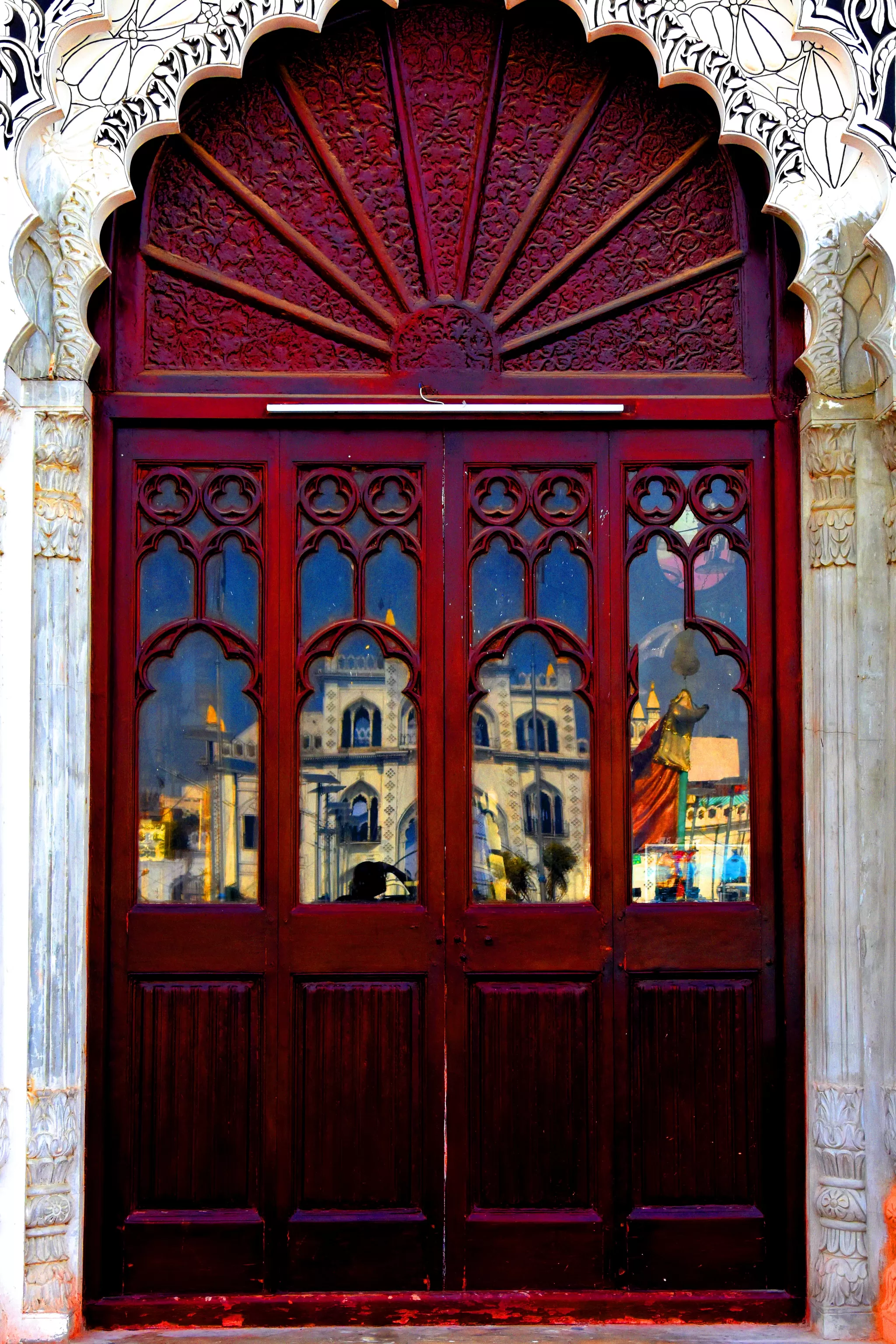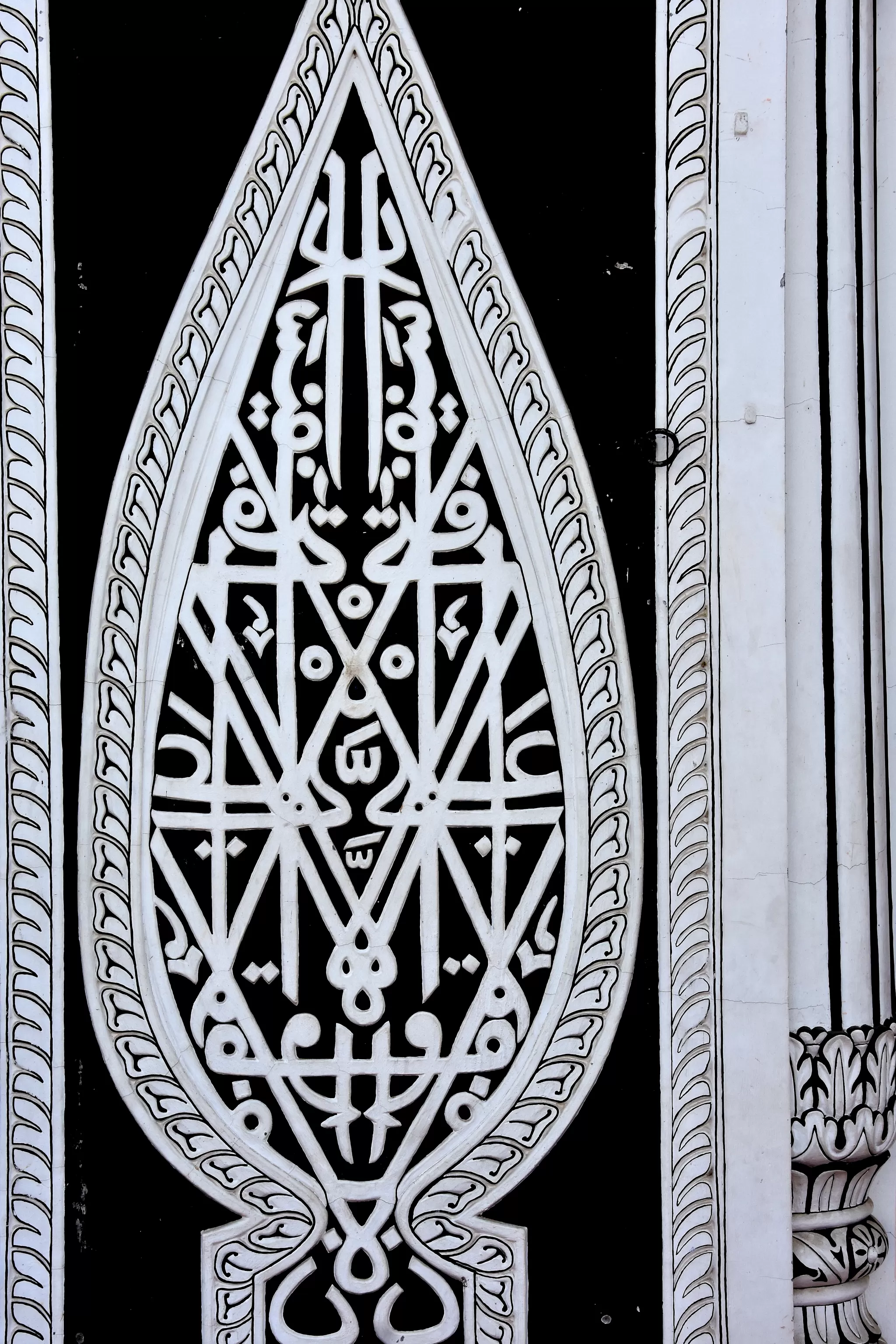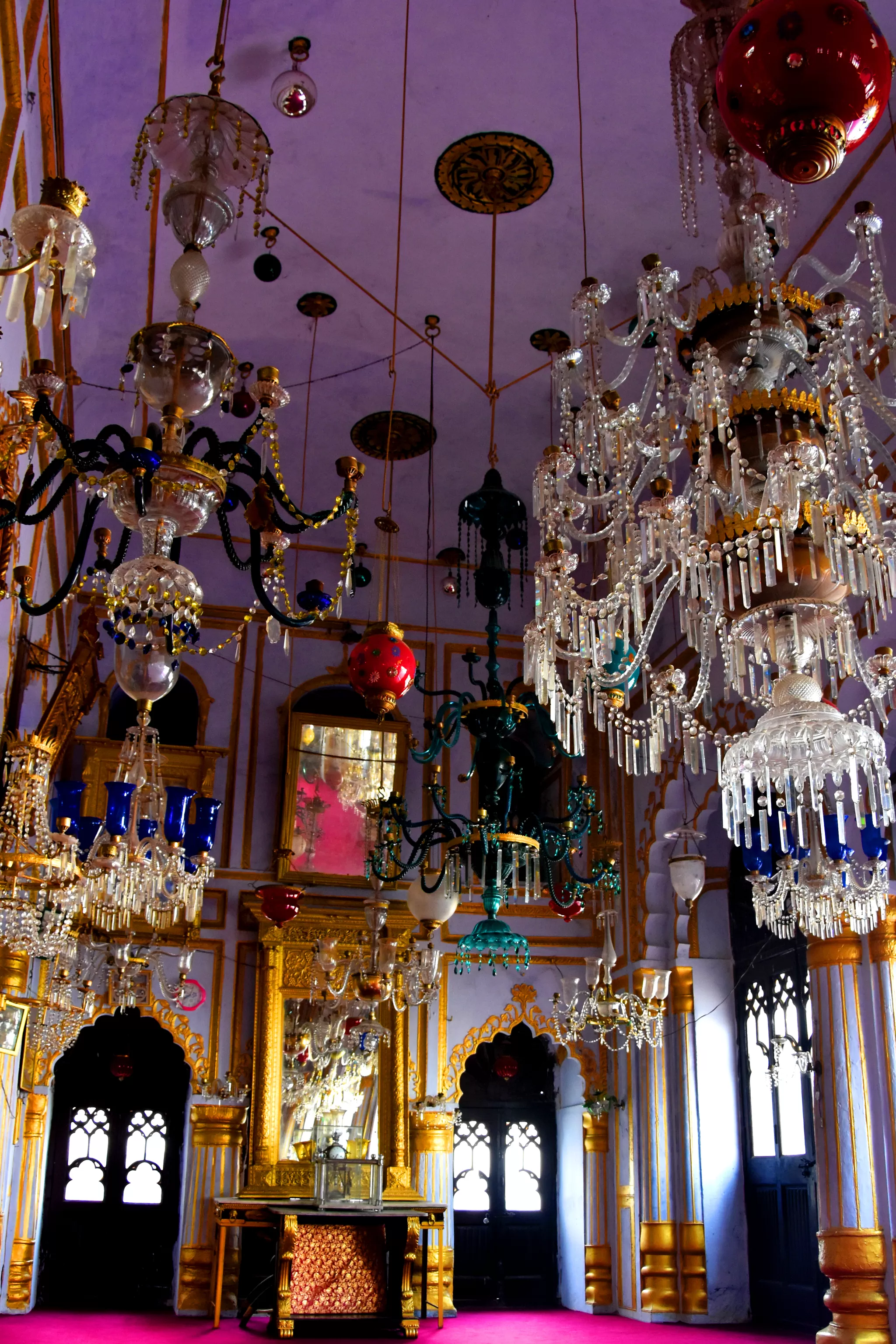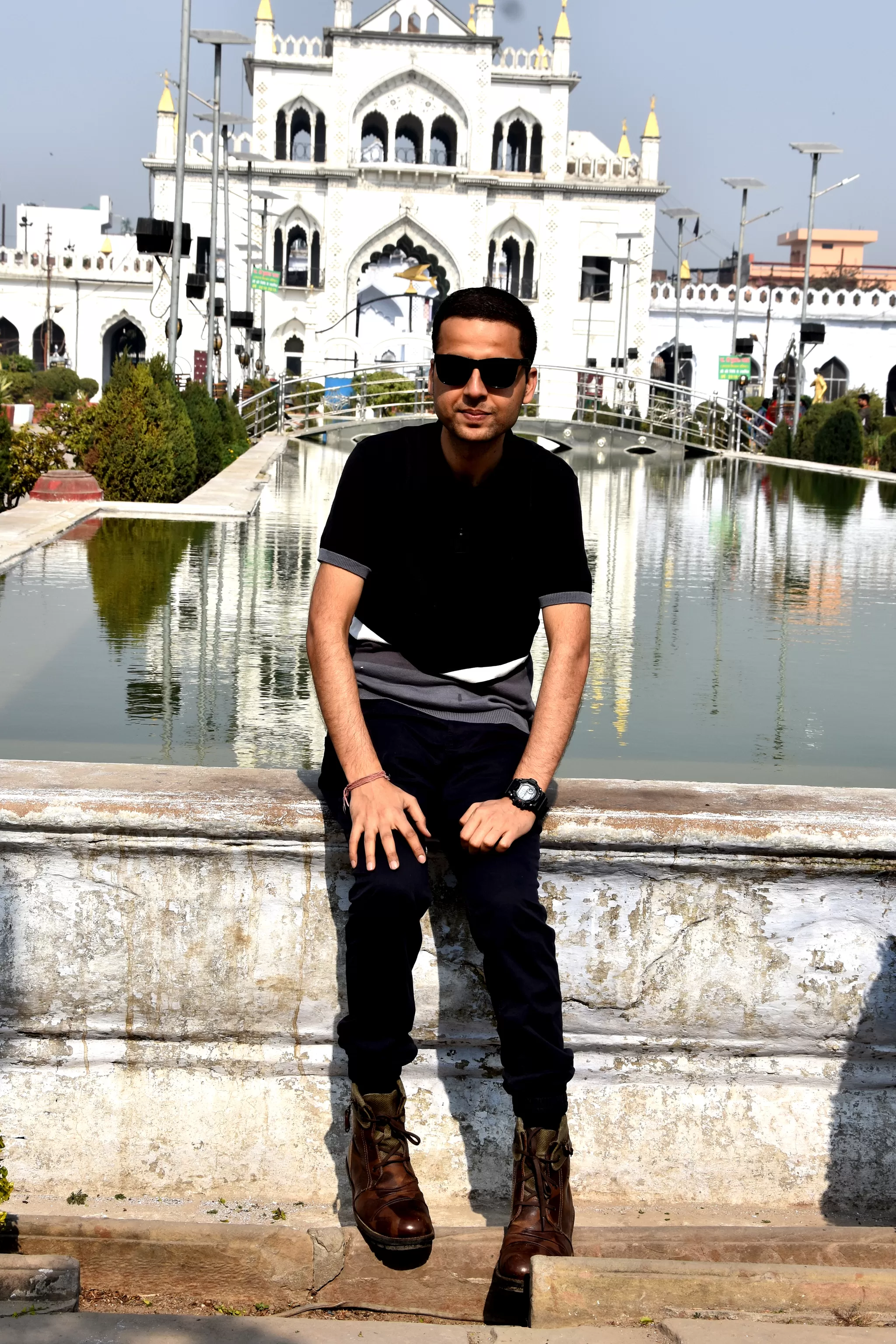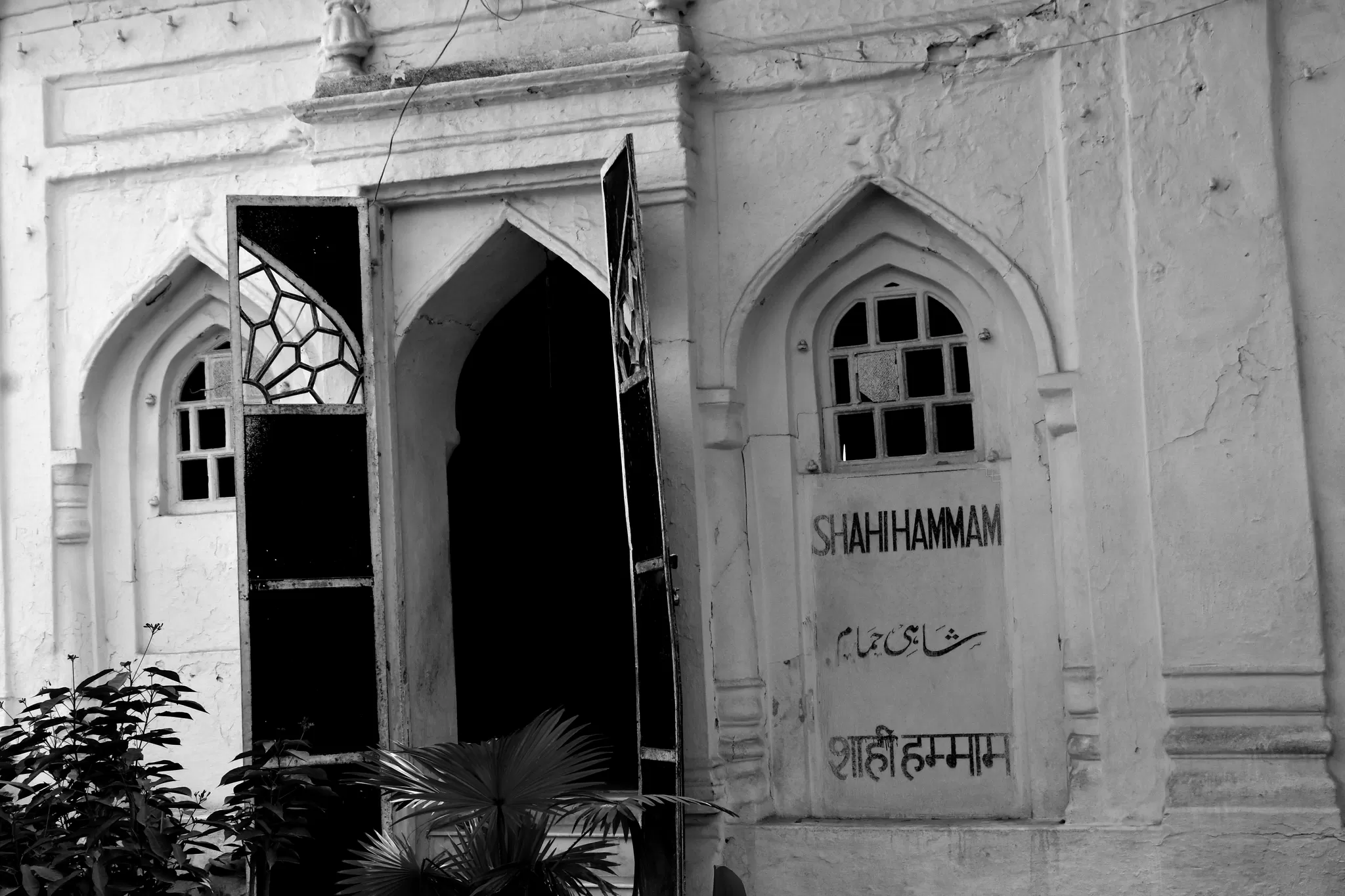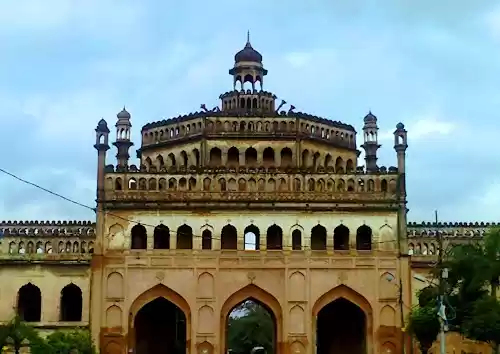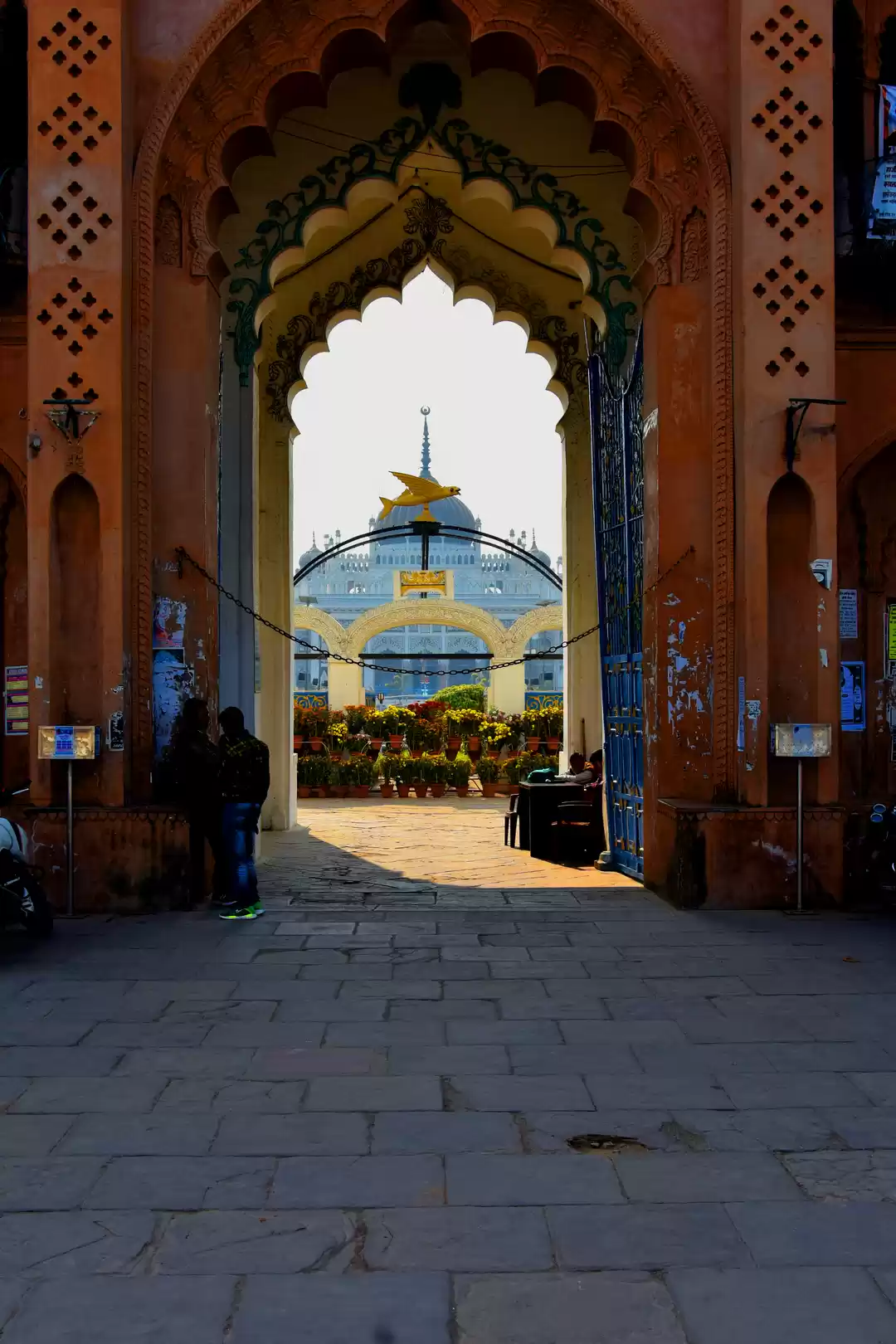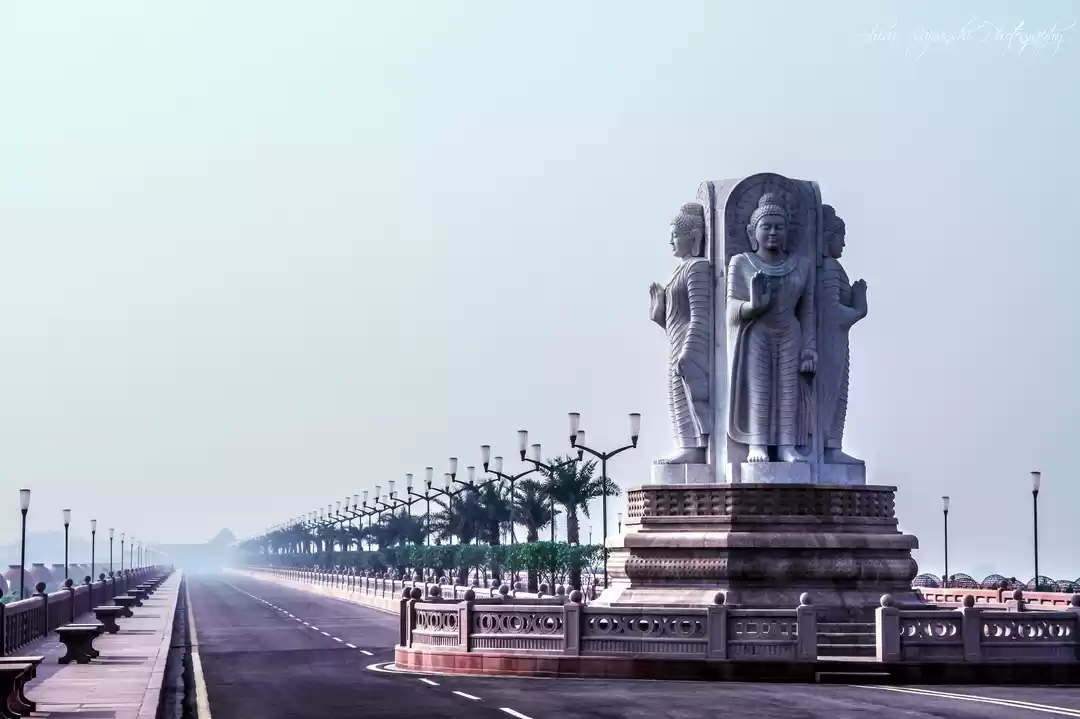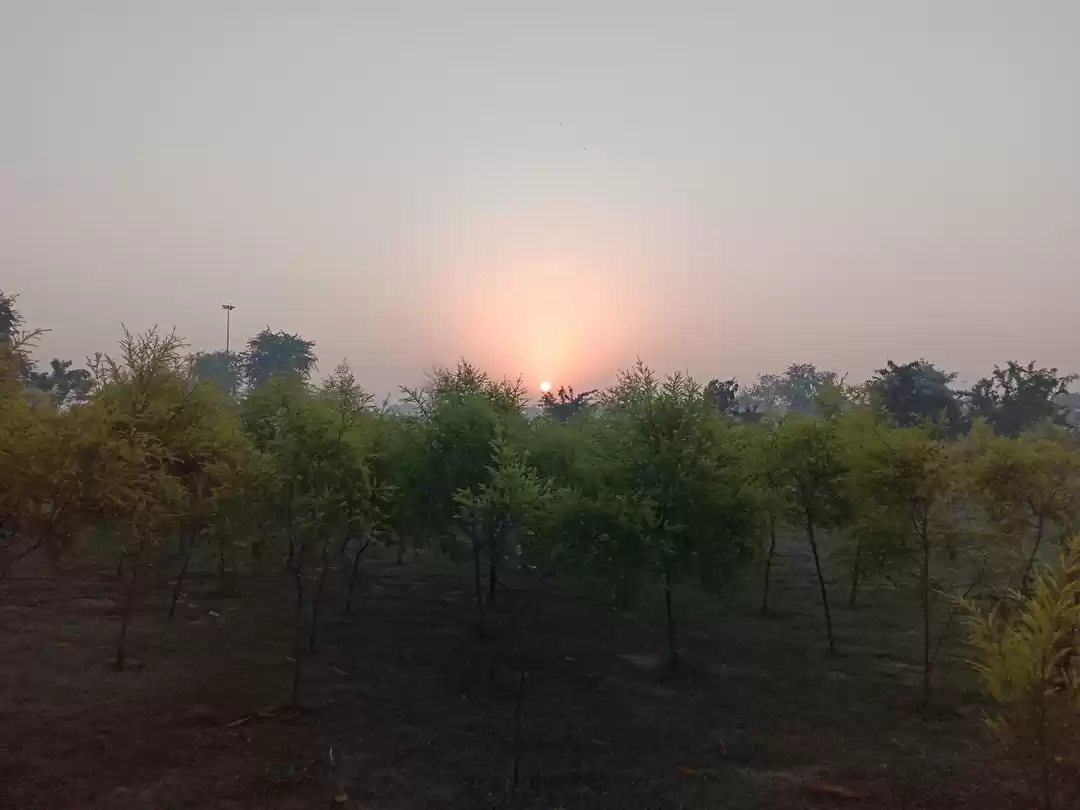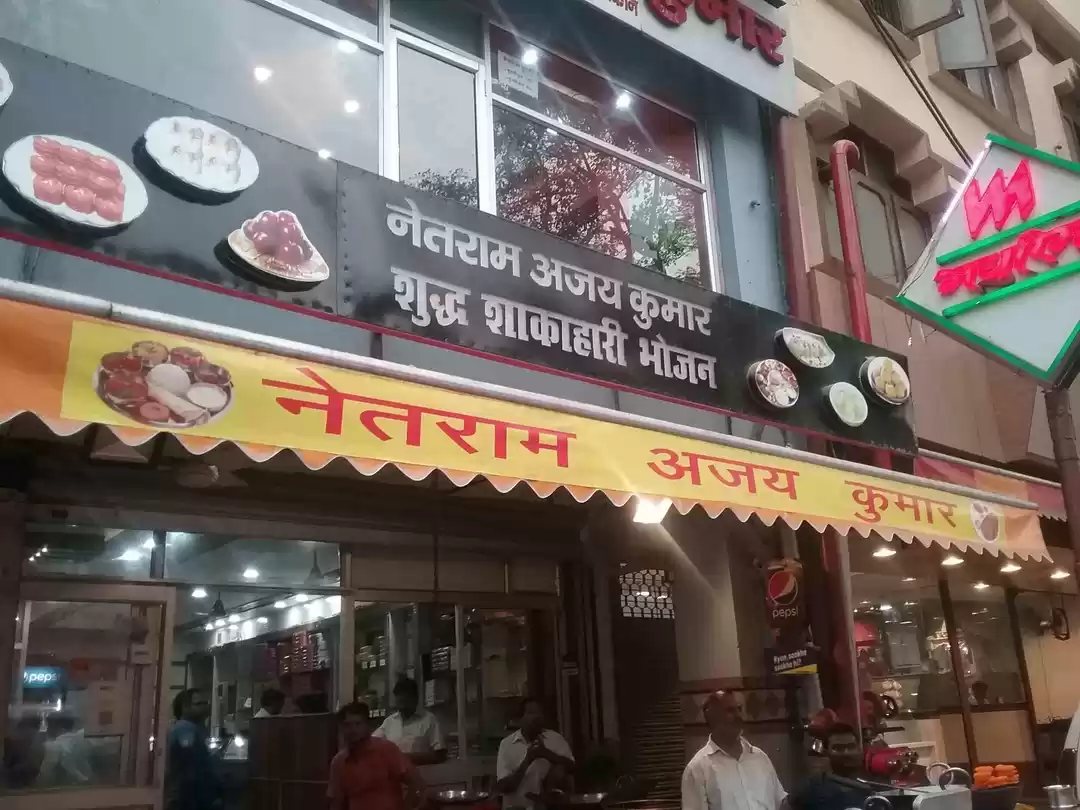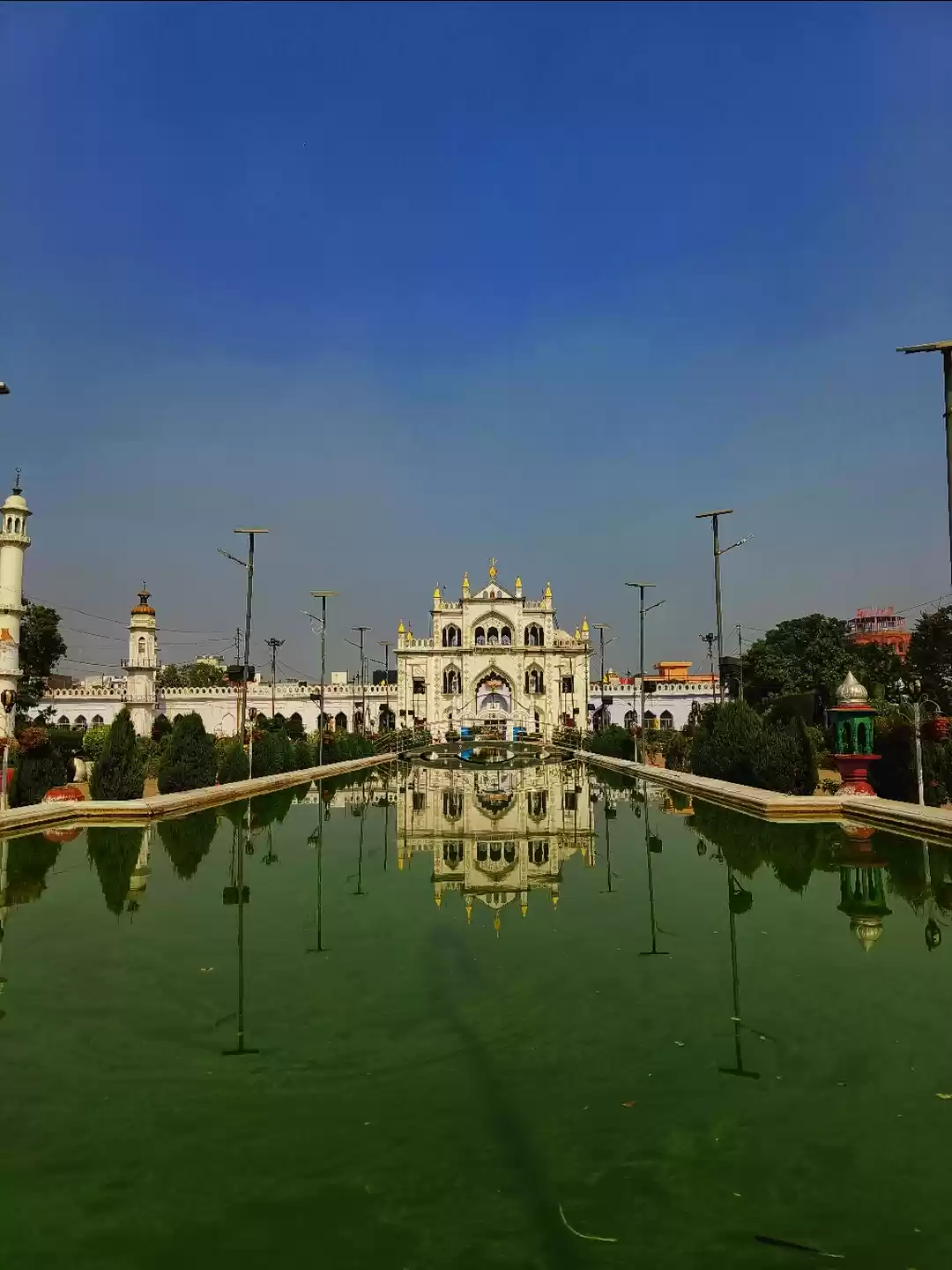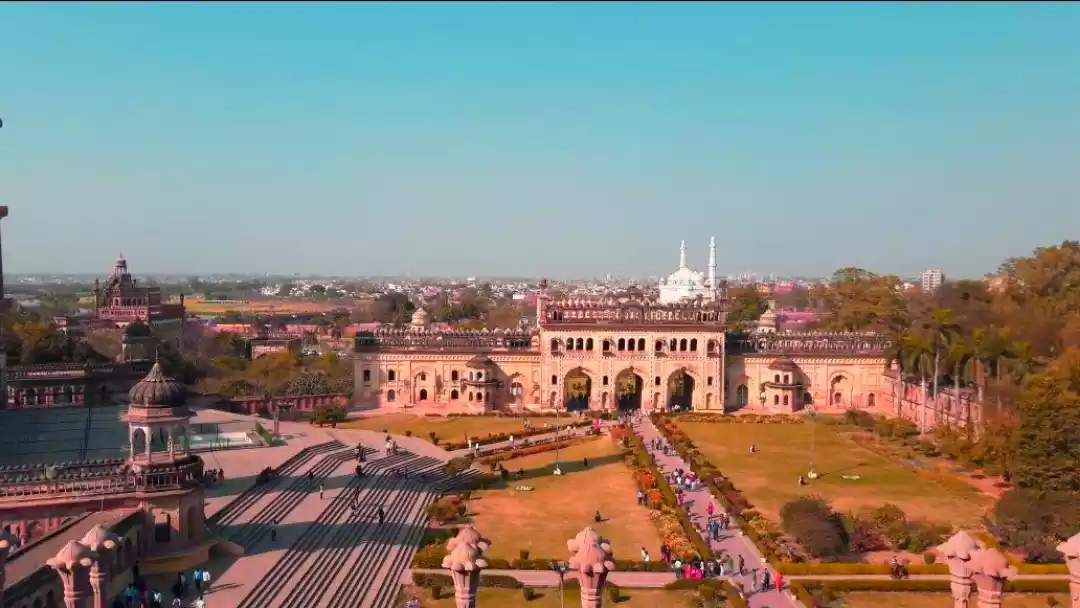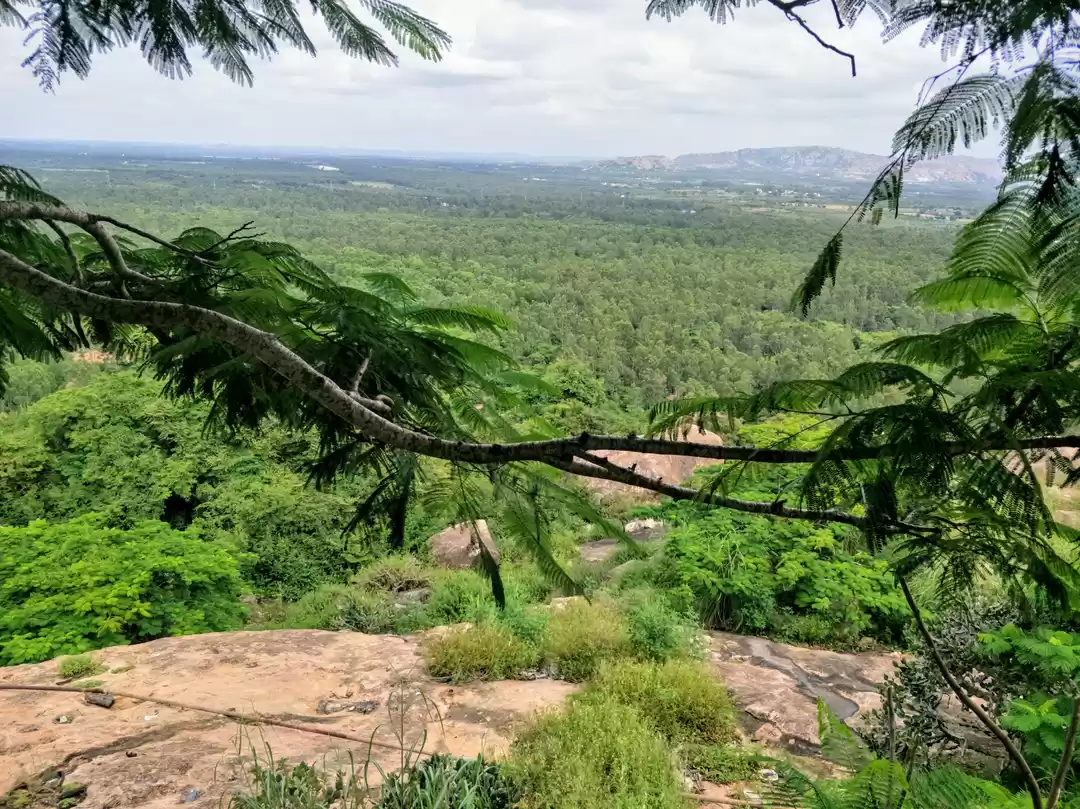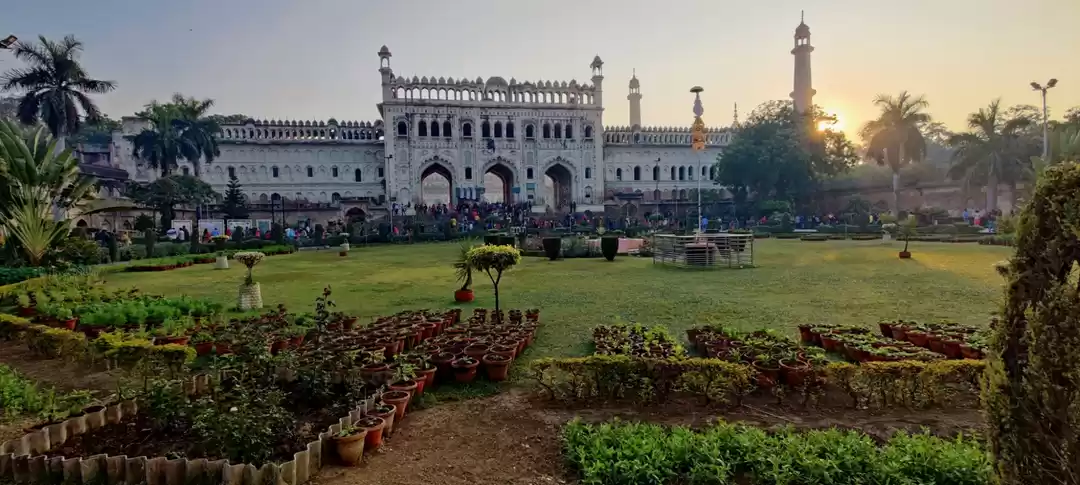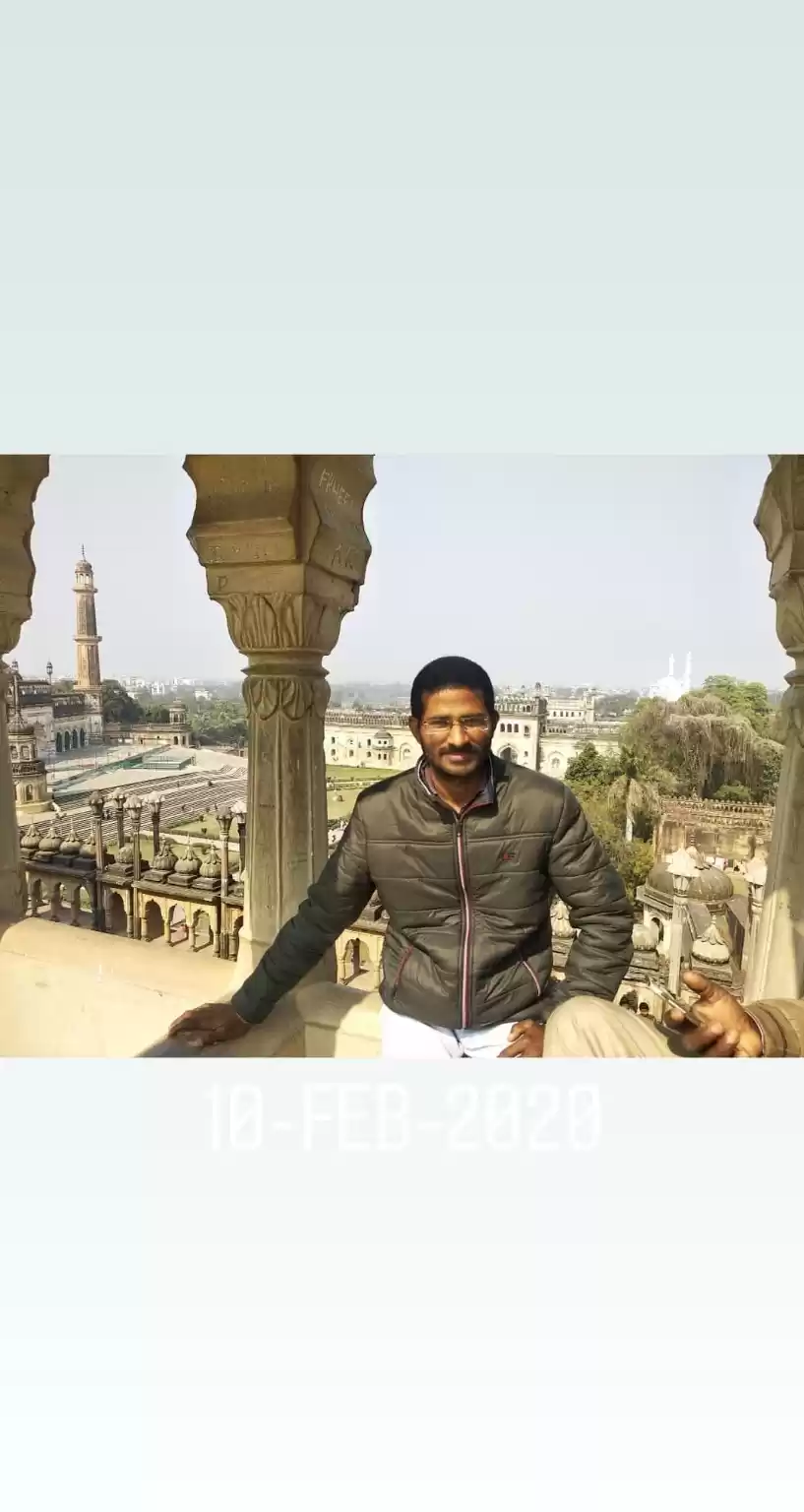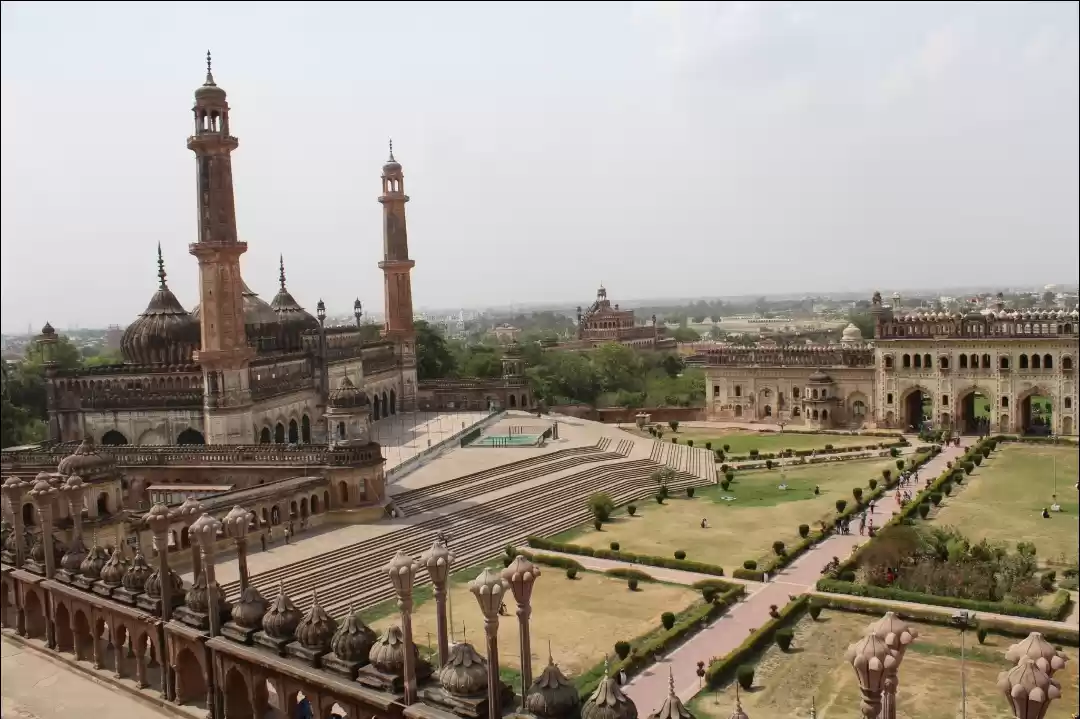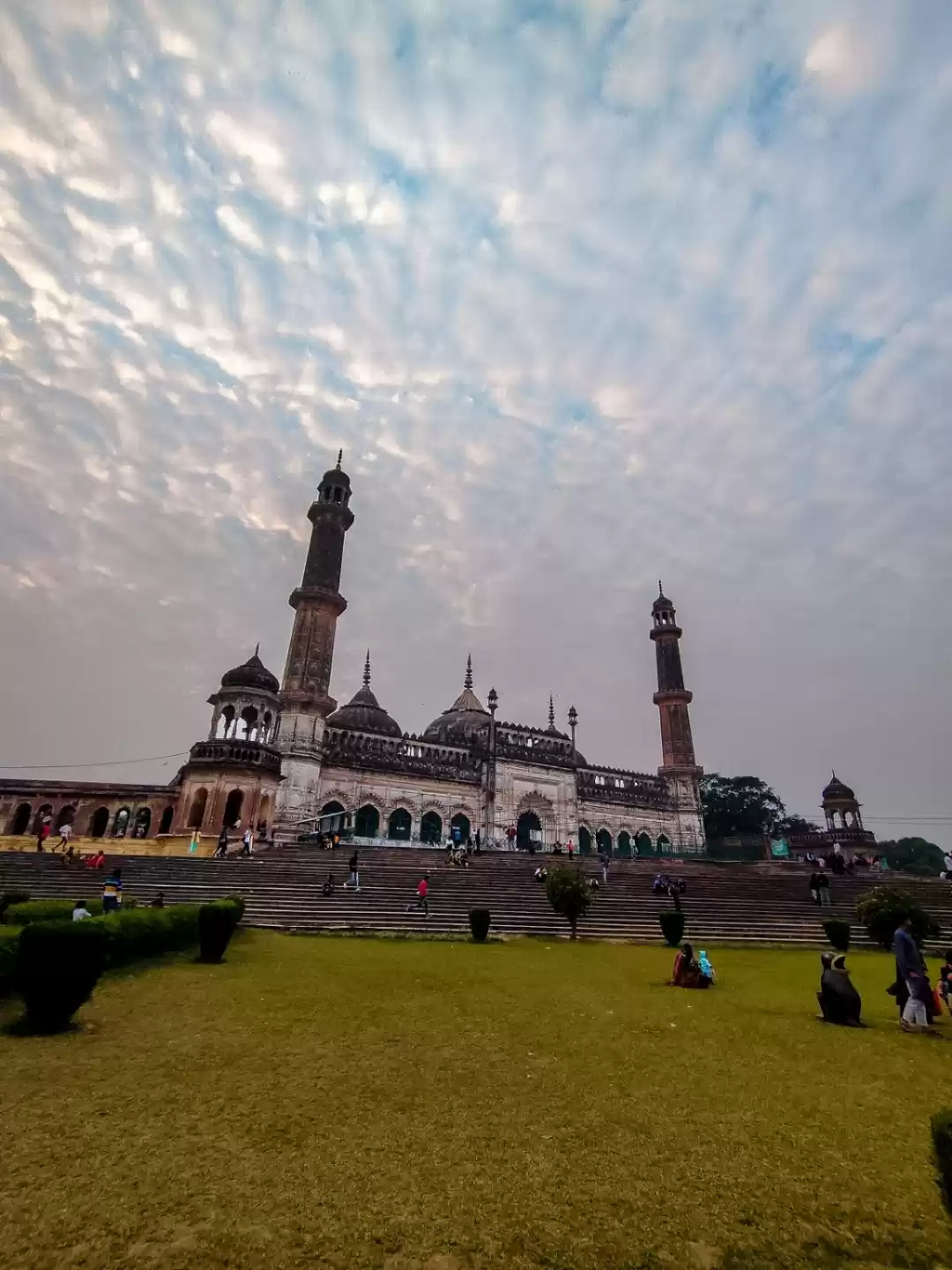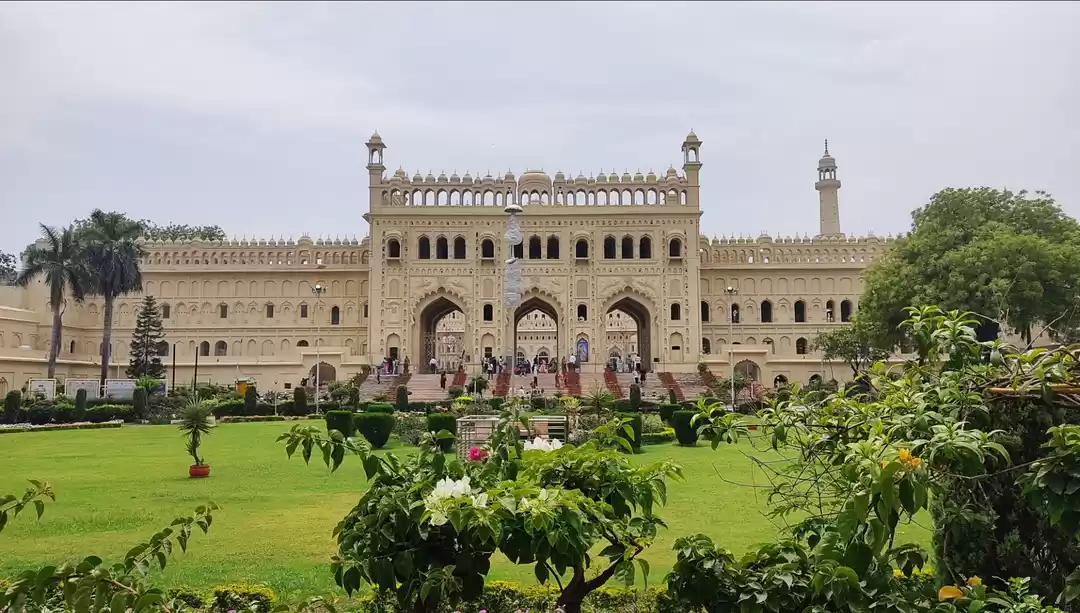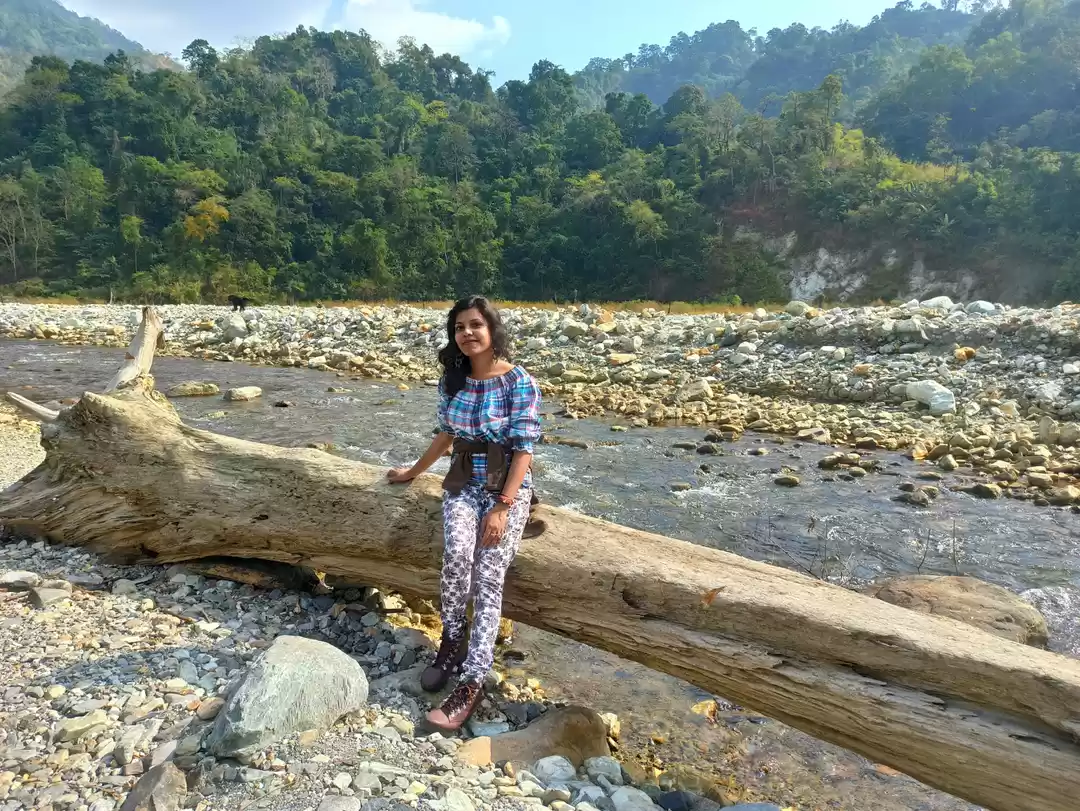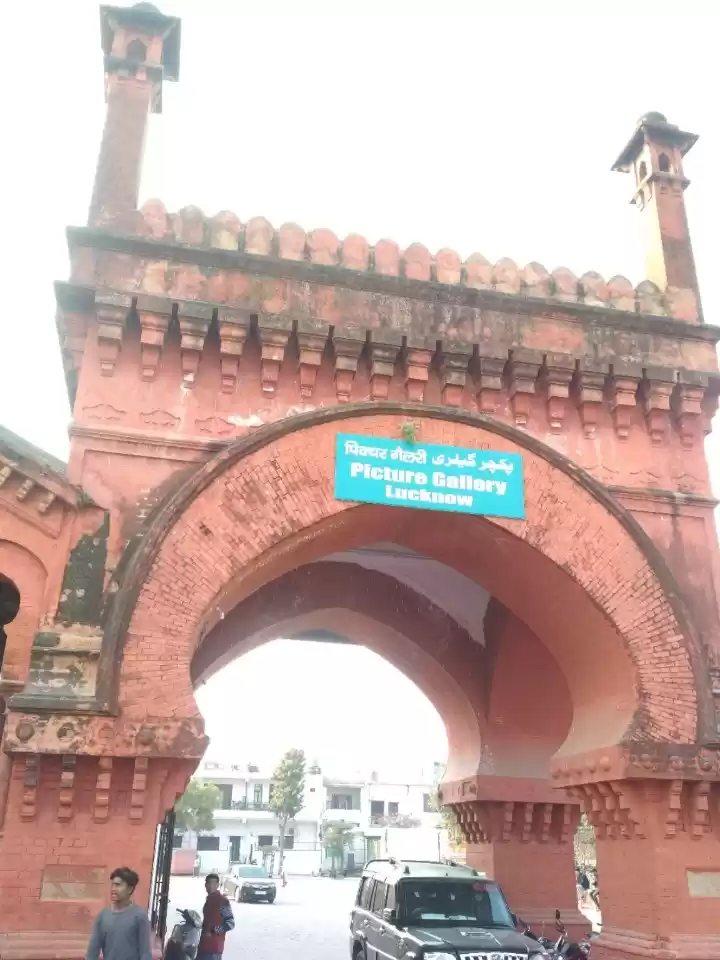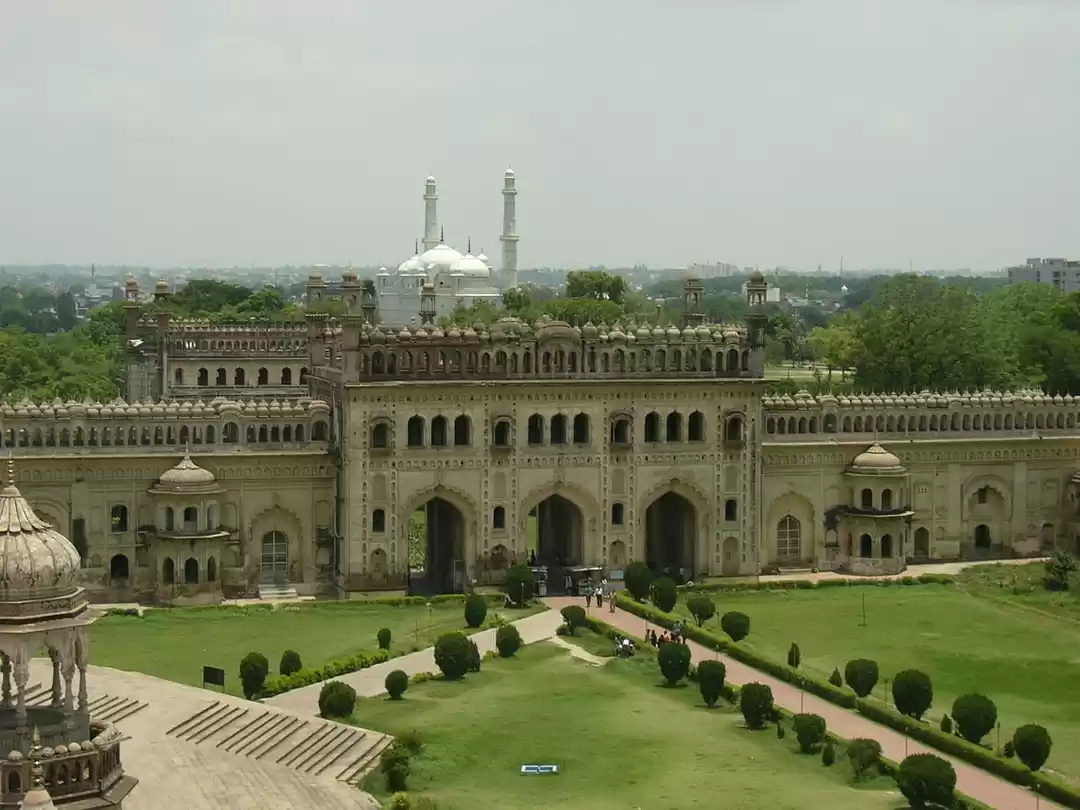Lucknow, the capital city of Uttar Pradesh, is known for its rich and diverse cultural heritage that reflects the glory of the Nawabi era. One of the most prominent and popular tourist attractions in Lucknow is the Chota Imambara, a magnificent complex of buildings that showcases the architectural beauty and artistic excellence of the 19th century.
Chota Imambara, also known as Husainabad Imambara or Palace of Lights, is a must-visit destination for anyone who wants to experience the charm and elegance of Lucknow’s history and culture.
Chota Imambara is located in the old city area of Lucknow, near the Bara Imambara and the Rumi Darwaza. It is easily accessible by public transport, such as buses, auto-rickshaws, or cycle-rickshaws, from different parts of the city. Alternatively, you can also hire a taxi or a car to reach Chota Imambara comfortably and conveniently.
Chota Imambara is a complex of several buildings, including a mosque, a tomb, a clock tower, a garden, and a pond. The main attraction of the complex is the Imambara itself, which is a grand hall that houses the tombs of Muhammad Ali Shah, the third Nawab of Awadh, and his mother. The Imambara is also used as a congregation hall for Shia Muslims during the Muharram festival. The other attractions of the complex are the Asafi Mosque, the Satkhanda, the Husainabad Picture Gallery, and the Husainabad Clock Tower. Each of these buildings has its own history and significance, and is worth exploring in detail.
History and Architecture
Chota Imambara was built in 1838 by Muhammad Ali Shah, the third Nawab of Awadh, as his own mausoleum. He wanted to create a monument that would rival the grandeur and splendor of the Bara Imambara, which was built by his grandfather, Asaf-ud-Daula, the fourth Nawab of Awadh. Muhammad Ali Shah also intended to provide employment and relief to the people of Lucknow, who were suffering from a famine at that time. He employed thousands of artisans and workers to construct the Chota Imambara, which took about four years to complete.

The architecture and design of Chota Imambara is influenced by the Persian, Mughal, and Awadhi styles. The Imambara is built of white marble and limestone, and is adorned with elaborate carvings, paintings, calligraphy, and chandeliers. The exterior of the Imambara is decorated with Quranic verses and floral motifs, while the interior is embellished with mirrors, crystals, silver, and gold. The dome of the Imambara is crowned with a golden finial, which is said to be made of pure gold. The Imambara also has two large gateways, called Rauza and Baqeeda, that lead to the main hall. The Rauza is the main entrance, which is flanked by two minarets and has a large arch with a clock. The Baqeeda is the secondary entrance, which is smaller and simpler than the Rauza.
The other buildings in the complex are also examples of the exquisite craftsmanship and skill of the Nawabi era. The Asafi Mosque, which is located on the right side of the Imambara, is a beautiful mosque that has three domes and two minarets. The mosque is named after Asaf-ud-Daula, the founder of the Awadh dynasty, and is used for daily prayers by the locals. The Satkhanda, which is located on the left side of the Imambara, is a partially constructed tower that was supposed to have seven stories, but only four were completed. The tower was inspired by the Leaning Tower of Pisa, and was meant to be an observatory for the Nawab. The Husainabad Picture Gallery, which is located behind the Imambara, is a museum that displays the portraits and paintings of the Nawabs of Awadh and their family members. The gallery is housed in a Baroque-style building that has a dome and a clock. The Husainabad Clock Tower, which is located opposite the Imambara, is a 67-meter-high tower that was built in 1881 by the British. The tower has a Gothic-style design and has a clock that was imported from London.
Culture and Festivals
Chota Imambara is not only a historical monument, but also a cultural symbol of Lucknow. It represents the religious, artistic, and culinary traditions of the Nawabi era, and is a source of pride and identity for the people of Lucknow. Chota Imambara is especially famous for its celebration of the Muharram festival, which is the commemoration of the martyrdom of Imam Husain, the grandson of Prophet Muhammad, and his followers in the battle of Karbala. Muharram is observed by the Shia Muslims, who form a significant part of Lucknow’s population, and is marked by processions, prayers, and mourning.

During Muharram, Chota Imambara is transformed into a spectacle of lights and colors. The Imambara and its surroundings are decorated with thousands of lamps, candles, and chandeliers, creating a dazzling and mesmerizing effect. The Imambara also displays the tazia and the alams, which are replicas of the tombs and the standards of Imam Husain and his companions, made of wood, paper, and metal. The tazia and the alams are carried by the devotees in the processions, along with the taboots, which are coffins containing the relics of the martyrs. The processions pass through the streets of Lucknow, accompanied by the sounds of drums, cymbals, and chants. The processions culminate at the Karbala, which is a cemetery where the martyrs are buried.
Chota Imambara is also a place where one can enjoy the art and cuisine of Lucknow. The Imambara has a collection of rare and valuable artifacts, such as the golden throne of Muhammad Ali Shah, the silver throne of Nasir-ud-Din Haider, the crown of Ahmad Shah Bahadur, the sword of Tipu Sultan, and the robe of Napoleon Bonaparte. The Imambara also has a library that contains ancient manuscripts and books on various subjects. The Imambara also offers a taste of the famous Awadhi cuisine, which is a blend of Mughlai and Persian influences. The cuisine is known for its use of spices, herbs, nuts, and saffron, and its delicacies such as kebabs, biryani, korma, sheermal, and kulfi.
Tips and Precautions
Chota Imambara is a place that deserves to be visited and appreciated by every traveler who visits Lucknow. However, there are some tips and precautions that one should keep in mind while planning a trip to Chota Imambara. Here are some of them:
The best time to visit Chota Imambara is during the winter season, from October to March, when the weather is pleasant and comfortable. The summer season, from April to September, is very hot and humid, and can be uncomfortable for sightseeing. The monsoon season, from July to September, can be rainy and cloudy, and can affect the visibility and accessibility of the monument.
The entry fee for Chota Imambara is Rs. 25 for Indian nationals and Rs. 300 for foreign nationals. The timings for Chota Imambara are from 6 am to 5 pm, except on Fridays, when it is closed for prayers. The timings may vary during festivals and special occasions, so it is advisable to check the official website or contact the authorities before visiting.
Chota Imambara is a religious and historical site, and one should respect its sanctity and significance. One should dress modestly and appropriately, and avoid wearing shorts, skirts, or sleeveless clothes. One should also remove their shoes and cover their head before entering the Imambara or the mosque. One should also refrain from touching, damaging, or littering the monument or its surroundings. One should also maintain silence and decorum while inside the Imambara or the mosque, and avoid taking photographs or videos without permission.
Chota Imambara is a popular tourist attraction, and can be crowded and busy during peak hours or seasons. One should plan their visit accordingly, and avoid visiting during weekends or holidays, when the rush is higher. One should also book their tickets and transport in advance, and arrive early to avoid long queues and delays. One should also be aware of the touts, guides, or vendors who may try to overcharge or mislead the visitors. One should also be careful of their belongings and valuables, and keep them safe and secure.
Getting There
To reach Chota Imambara from the railway station, you have a few options:
You can take a taxi or an auto-rickshaw from the Lucknow railway station to Chota Imambara. The distance is about 6 km and the travel time is about 15 minutes, depending on the traffic. The fare may vary from Rs. 100 to Rs. 200, depending on the type of vehicle and the route.
You can also take a bus or a cycle-rickshaw from the railway station to Chota Imambara. The nearest bus stop is Pandeyganj Metro Station, which is about 2 km away from Chota Imambara. You can take any bus that goes to Husainabad or Daulatganj and get off at Pandeyganj Metro Station. From there, you can walk for about 10 minutes or take another bus or cycle-rickshaw to Chota Imambara. The fare may vary from Rs. 10 to Rs. 20, depending on the type of vehicle and the route.
You can also walk from the railway station to Chota Imambara if you are feeling adventurous and fit. The distance is about 6 km and it may take you around an hour to reach Chota Imambara, depending on your pace and breaks.
Chota Imambara is a jewel of Lucknow’s Nawabi heritage that offers a glimpse into the history, culture, and art of the 19th century. It is a place that attracts visitors from all over the world, who come to admire its architectural beauty, artistic excellence, and cultural significance.
Chota Imambara is a place that celebrates the spirit and legacy of the Nawabs of Awadh, who left behind a rich and diverse heritage that is still alive and vibrant in Lucknow. Chota Imambara is a place that you should not miss if you want to experience the charm and elegance of Lucknow.






